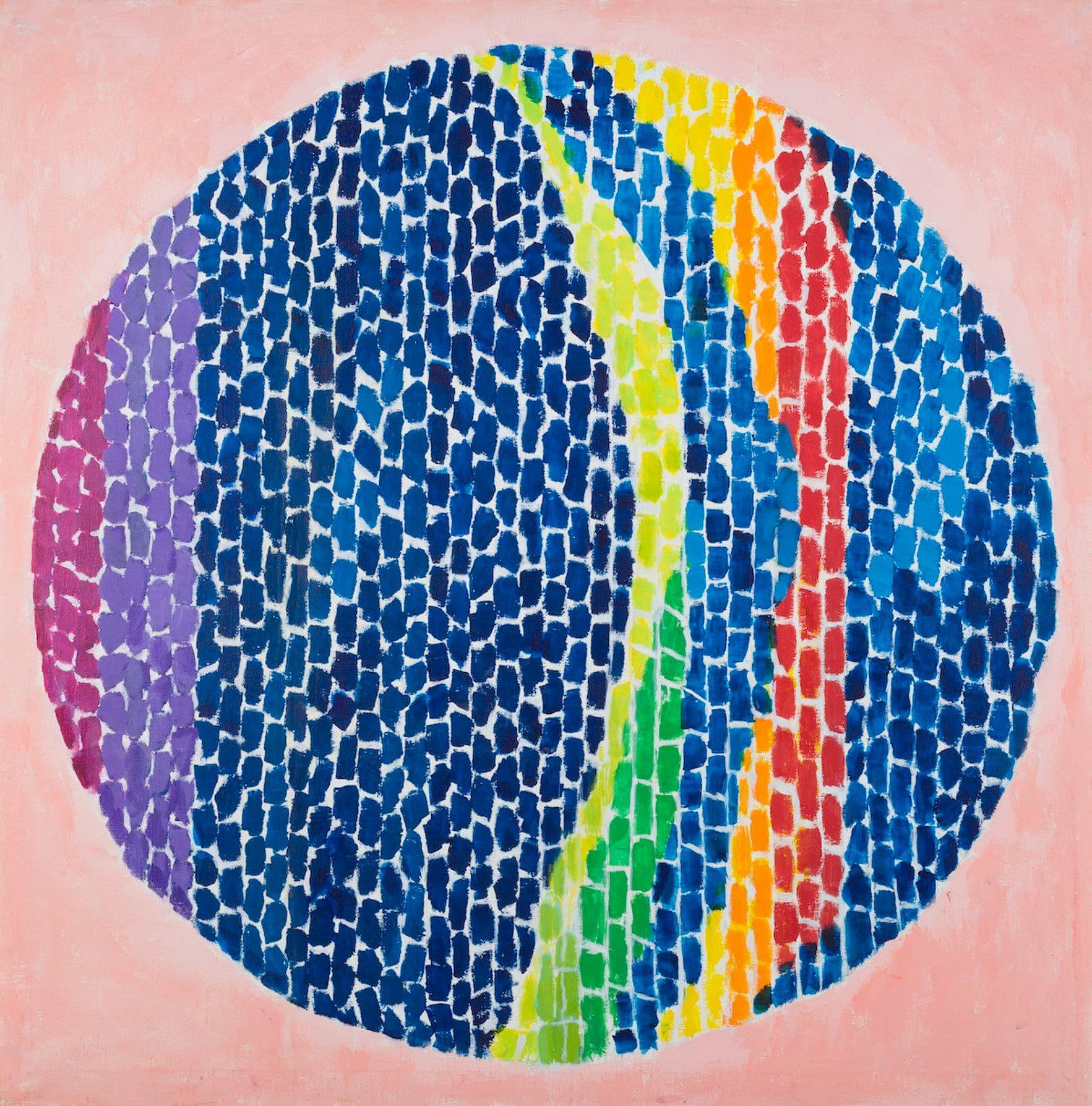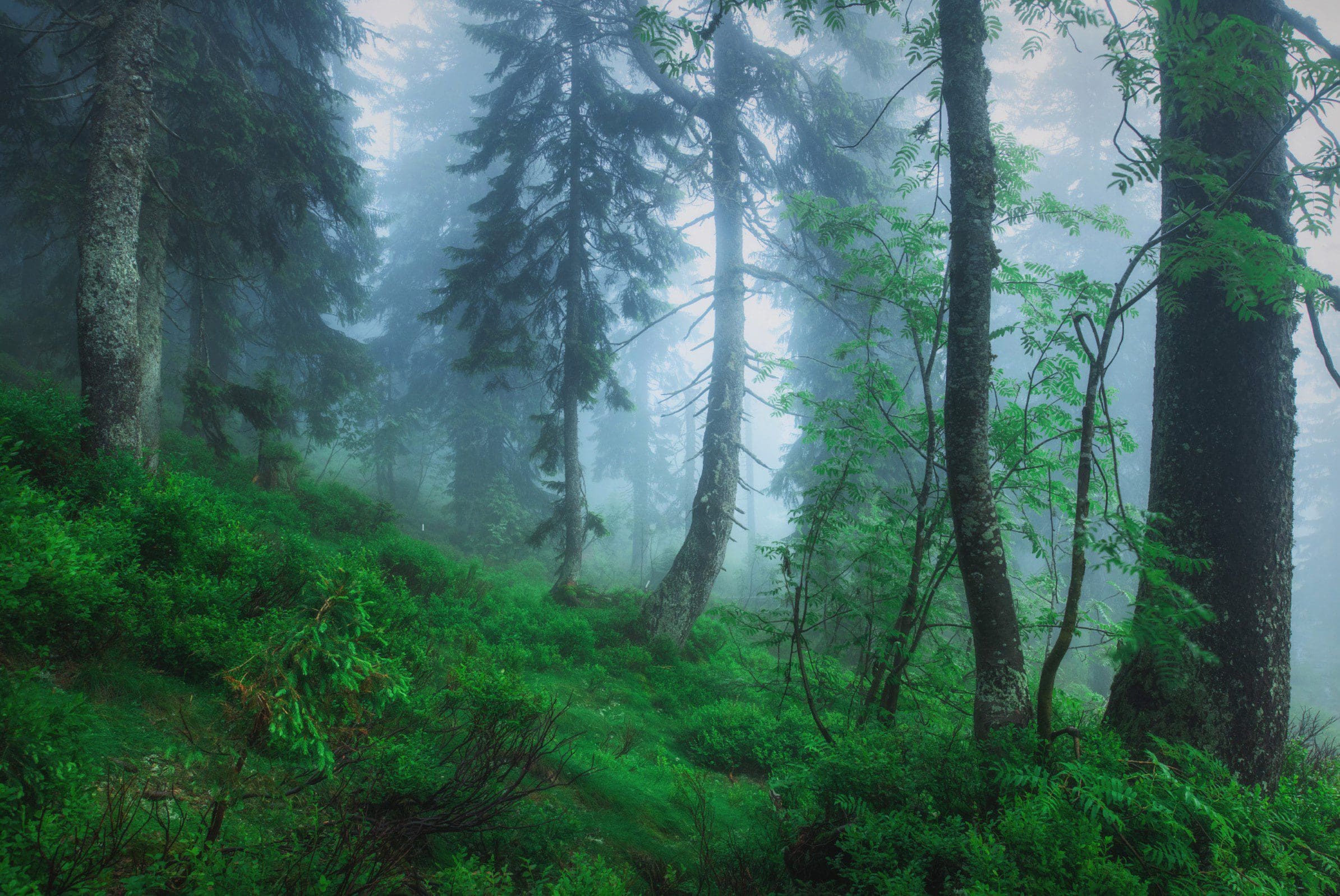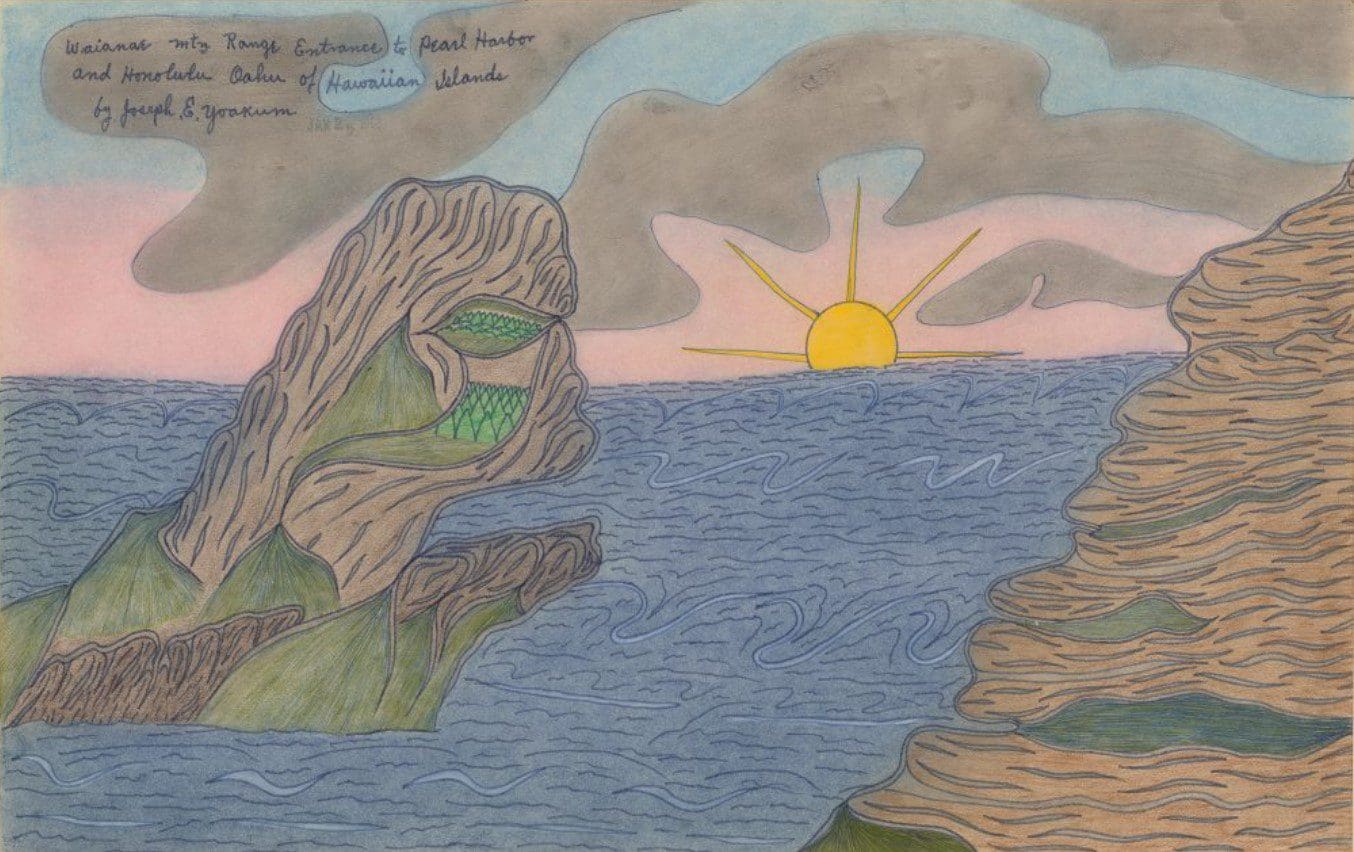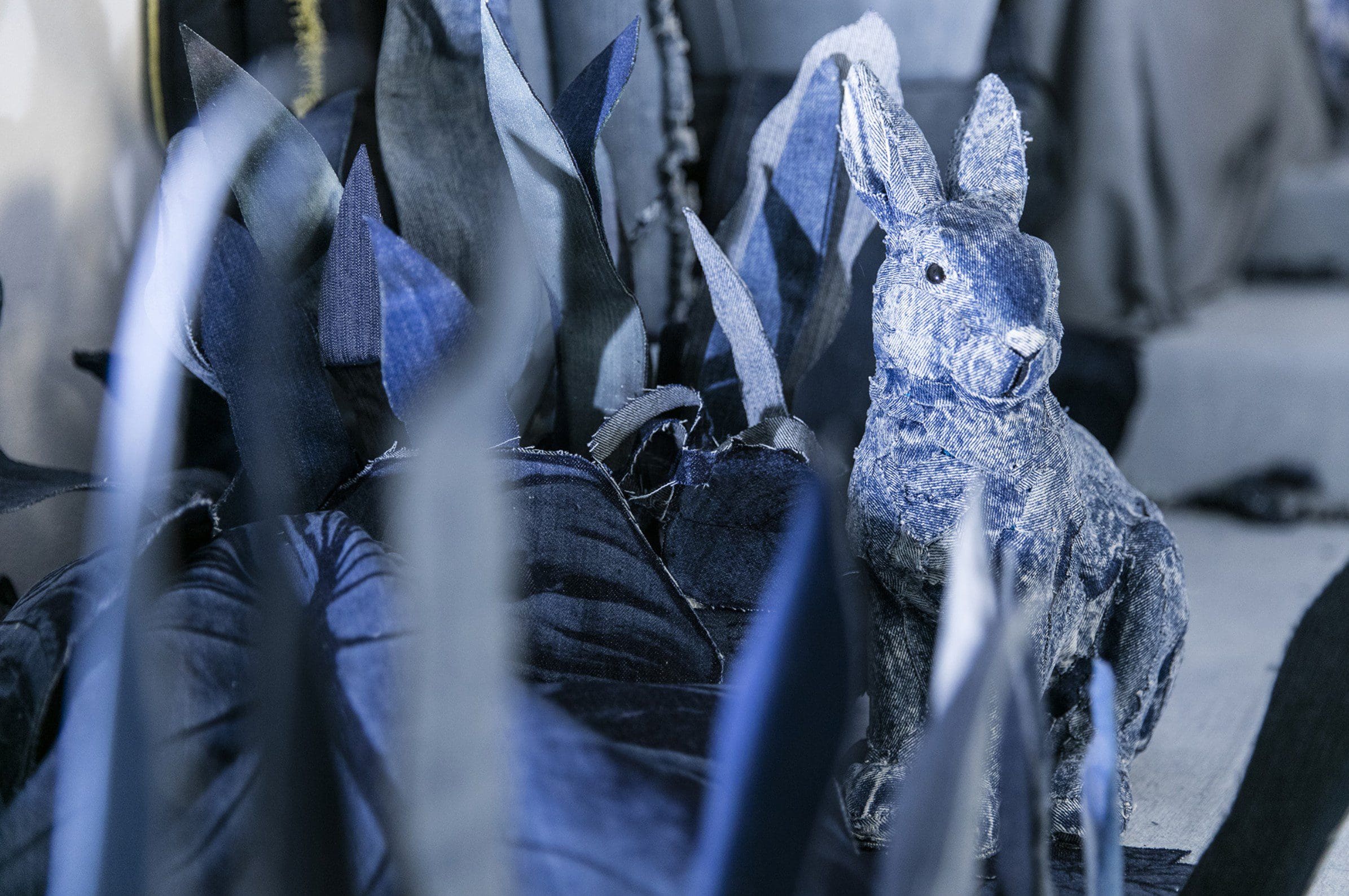“We Will Win: Our Banner in the Sky (after Frederic Edwin Church)” (2020), cotton cord, nylon, paracord, fabric, and ribbons, 84 x 108 x 12 inches, 120-inch bar. Photo by Ian Vecchiotti. Images courtesy of Jacqueline Surdell and Patricia Sweetow Gallery, shared with permission
Chicago-based artist Jacqueline Surdell sutures lengths of rope, fabric, and silky ribbons into sprawling abstract tapestries that hang from walls and standalone armatures in textured, colorful masses. Swelling clusters of knots and ties, loose weaves, braided tunnels, and dangling strands compose her three-dimensional compositions that are disrupted by sporadically used items like steel chains, volleyballs, and polyester shower curtains. Because of the scale of the pieces and the hefty materials, the artist often uses her body as a shuttle to weave the brightly colored fibers together on massive hand-built looms.
Surdell embeds parts of her Chicago upbringing in her wall sculptures, especially childhood memories of her grandmother’s landscape paintings and her grandfather’s job in South Side steel mills. These two experiences converge in her textured works by evoking vast terrains and the city’s industrial history through her use of commercial materials.










